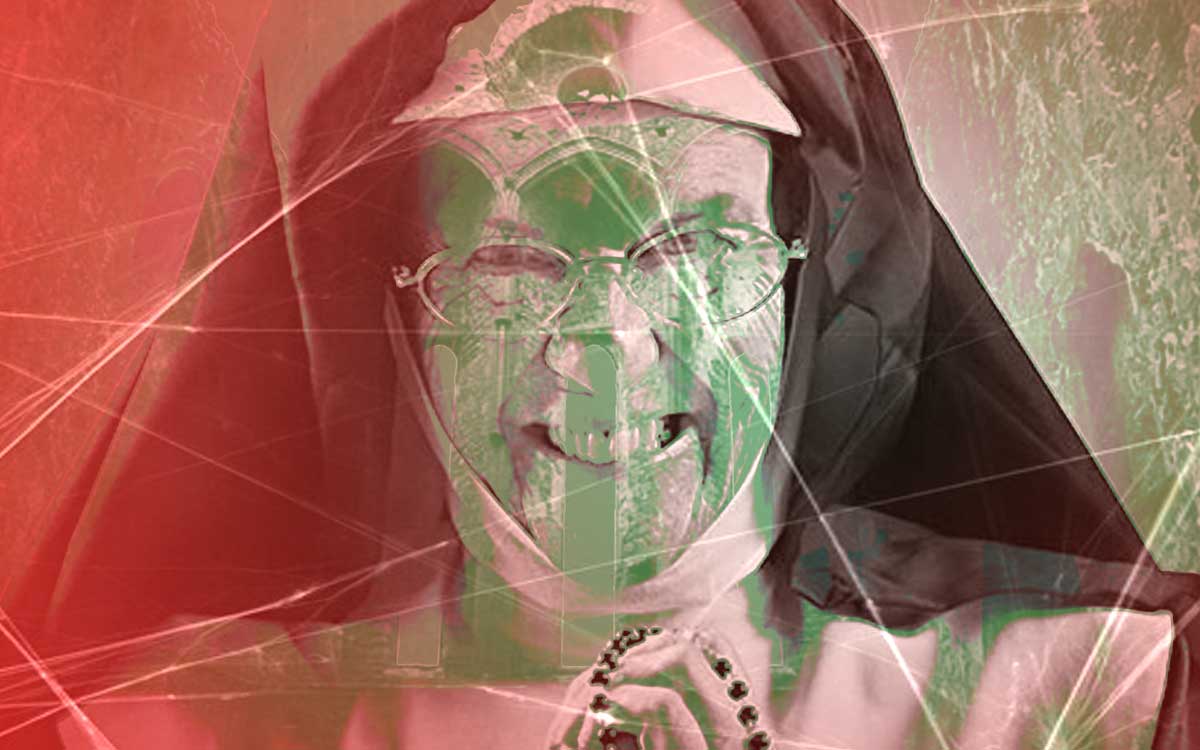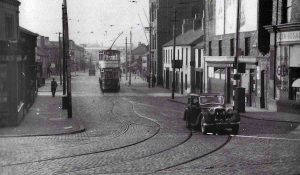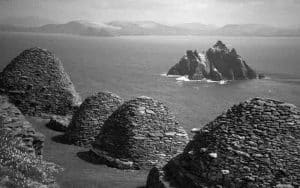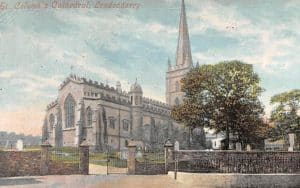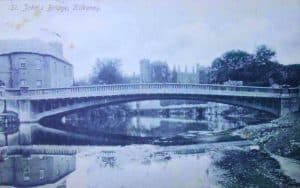Ireland is home to the most unnerving religious ghosts and hauntings, says ANN MASSEY
Ireland has seen religious bloodshed for centuries, forced into Christianity from the Pagan ways of old by St. Patrick and then oppressed for following those Catholic doctrines. Of course, the most persecuted were the men and women of the Church, so it is little wonder we have more than our fair share of ‘Holy ghosts!
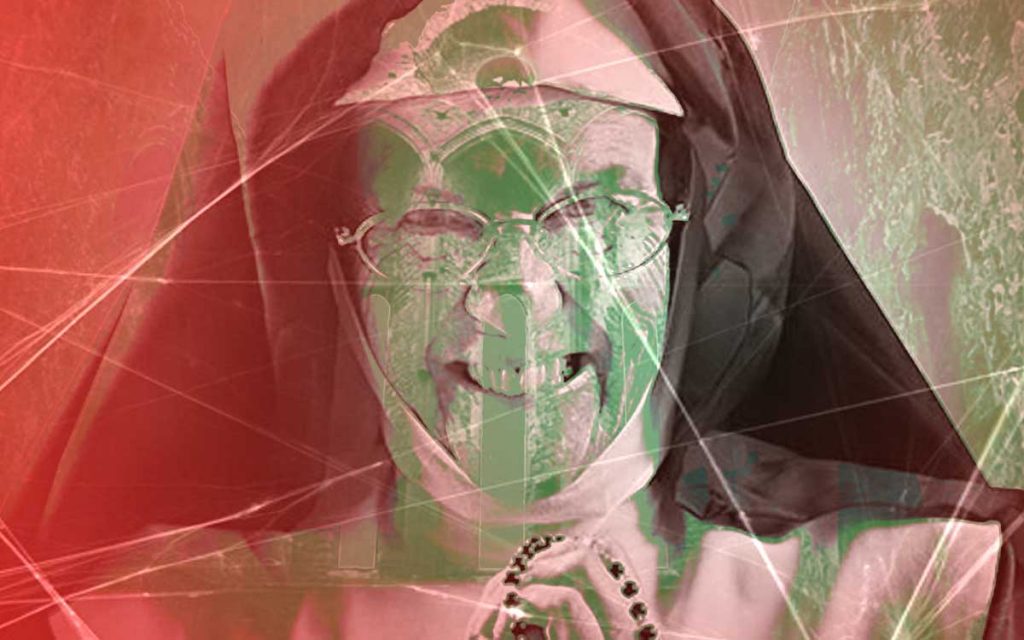
Lambeg Churchyard, County Antrim
The old Churchyard stands on the site of a 13th century Franciscan monastery with gravestones dating back to 1626. A nun dressed in grey is said to float from the old Lambeg House to the Churchyard and disappear in what is locally known as the Nun’s Garden.
Clare Abbey Ruins, Ennis, County Clare
Standing on the banks of the River Fergus, this abandoned Augustinian Priory has not lost its inhabitants. A spectral procession of monks, heads bowed, make their way from the nearby parkland to the site of the old Abbey.
Kinnitty Castle, Birr, County Offaly
One of the three haunted castles of Offaly, this 19th Century gothic revival castle is built on lands worshipped upon by druid and monk alike. There is one who remains who has been affectionately named Hugh, who walks through the castle, startling residents. Hugh is also known to have made predictions about the future that he has relayed to wary staff.
Kilbeggan Distillery, Lower Main St, Aghamore, Kilbeggan, Co. Westmeath
The stills of Kilbeggan began producing whiskey in the mid-eighteen century, under the watchful, hollow eyes of a very different kind of spirit. Monks who perhaps worshipped on the grounds before the construction of the distillery are seen to this day. The late Derek Acorah performed his own séance at the midlands location and spoke of the monks and a former proprietor remaining on the grounds.
Carlingford Abbey Ruins, Carlingford, County Louth
Carlingford stands on the scenic Cooley peninsula, but the history of the Abbey, also known as Carlingford Priory, is anything but tranquil. A history of bloodshed and power struggles, many of those involved are shades haunting other locations. This medieval site, however, is haunted by a nun who lived a former live as a pirate before taking her vows.
The Long Walk, Claddagh, Galway
This harbour side location seems romantic, as it is home to the world-famous Claddagh ring. The truth is, it is an eerie, narrow pathway, spooky even on the brightest day. The walk is said to be haunted by a nun, who’s image is something straight out of ‘The Nun’.
Marsh’s Library, St Patrick’s Close, Wood Quay, Dublin 8
Archbishop Narcissus Marsh founded this library over three hundred years ago and it is still a library to this day, with the original shelving in place, a library frequented by none other than Bram Stoker. Marsh spent most of his waking hours among the books and manuscripts he loved, while being guardian to his niece. He forbade her to act on her love for a young curate, however she eloped, leaving a letter from her heartbroken uncle. Too shattered to read it, Marsh placed the letter in a book and now haunts the library, moving from shelf to shelf, trying to find the last words from his niece.
Scattery Island, Kilrush, County Clare
Scattery Island is so named after the sea creature who tormented the inhabitants and lies just a few miles off the shore of Kilrush in County Clare. At the turn of the 19th Century a fisherman found himself needing sanctuary from a heavy storm and took refuge on Scattery and went into the chapel ruins to pray.As he knelt eyes closed, he heard voices and looked up to see monks and priests in ceremonial garb around the altar. Terrified he closed his eyes tightly again and prayed feverishly to be rid of the spirits before him. When he opened his eyes they were gone, the clouds and birds passing over the roofless ruin.
Abbey of the Black Hag, Shanagolden, County Limerick
Saint Katherine’s Augustinian Abbey was one of the first nunneries in Ireland, founded in 1298. Although fallen to the elements, the remains of the Abbey church and Refectory are still evident. It is believed that the last Abbess prior to the Abbey’s dissolution in 1541 practiced witchcraft in a room south of the Church, which became known as The Black Hag’s Cell. Along with the Countess of Desmond, she is said to haunt the ruins to this day.
Bonamargy Friary, Cushendall Road, County Antrim
Dating back to the 15th century, one of the inhabitants was a 17th century prophet, Sister Julia McQuillian. She became known as the Black Nun and upon her death, she bizarrely asked to be buried at the entrance of the chapel so that she could be trodden by those who entered. It is believed she was brutally murdered on the steps of the Friary and haunts the ruins.
Old Cemetery, Cobh, County Cork
Terrified witnesses have heard the chilling sound of a mass funeral procession for the victims of the Lusitania. They hear low murmuring voices and the sound of footsteps approaching the cemetery wall. Some assumed a funeral was approaching and looked up to see nothing but an empty road. The White Witch of Cobh claims to have seen what others only hear, a ghostly funeral being led by a spectral priest. Read more about Cobh ghosts here.
James O’Keeffe Institute, Demesne, Newmarket, County Cork
This former mansion house is now a business enterprise, but in between it was a convent. It was converted into offices once the nuns left and the area was deconsecrated. There is one room however, that a former religious resident has refused to leave. A nun leapt to her death from the upper storey window, smashing through the glass. When workmen began renovations, they replaced the pane, only to return to work to find it shattered on the ground below. A priest was called in to bless the location.
Presentation Convent, Waterford
This gothic revival 19th century convent was used by nuns until the Great Famine in the mid nineteenth century when they moved to a new location. It was then repurposed as a place of education and remains a school to this day. Apparently one of the nuns was reluctant to leave and remains, dressed in the white of a novice, walking the roads surrounding the former convent after dark.
Tintern Abbey, Saltmills, New Ross, County Wexford
Founded by the Earl of Pembroke, it was named after the Welsh town at the start of the 13th century. During a deadly tempest, the terrified Earl made a pact with God that if he ever saw landfall, he would build a place of worship in that place. A procession of ghostly monks carrying torches can be seen heading towards the Abbey entrance, the mumble of Gregorian chants carrying on the breeze.
Saint John’s House, Youghal, County Cork
Formerly known as The Priory, this 12th century former Irish Benedictine Monastery remains with many original features in place in the centre of Youghal, including a 14th century doorway right onto the street. The religious house was used as a Headquarters for Oliver Cromwell in 1649 which could account for the eerie sound of ghostly marching footsteps, however this is overshadowed by the spectral image of a monk who appears and dissipates, no doubt trying to protect his home from English attack.
Old Bawn House, Old Bawn Road and the Dodder, South County Dublin
This grand house was built in 1635 and belonged to Archbishop William Bulkeley. The residence remained home until his death and for many years after until demolishing. That was not the end of Archbishop Bulkeley however – in the area surrounding his former property on the anniversary of his death, a coach with supernatural footmen and six headless horses, crashes through the streets, the unearthly Archbishop inside. Anyone unlucky enough to see the death coach will die themselves in exactly 366 days.
Priest’s Leap, Bantry, County Cork
A steep single lane mountain road, it stands 1520 feet above sea level joining County Kerry and County Cork. Legend has it that a priest upon a horse was being chased by English soldiers and in order to escape, made a miracle leap across the gap into County Cork. Imprints of both horse and rider are said to be embedded in rocks within the vicinity and the ghostly figure of the priest haunts the mountain pass.
Skyrne Castle, Tara, County Meath
This former medieval castle is now an air bnb rental! Dating back to 1175, there was an old monastery close by and Skyrne was used as a stopping point for religious pilgrimages bringing Holy Relics to Armagh so they could use the Holy Wells of Saint Colmcille in the area. Believed to be the apparition of a nun, she seems at unrest, found in the drawing room and tower, vanishing before bewildered witnesses, her ghostly footsteps echoing through unoccupied parts of the castle.
Rhetoric House, Maynooth College, Maynooth, County Kildare
This 18th century college started as a Seminary for the training of priests. Despite the intense study of Catholicism, evil was always present. Accounts of demonic activity and spectral manifestations were rife, and two students committed suicide by razor blade. One survived long enough to see he saw the face of a demon looking at him through the mirror, forcing him to harm himself – a student possessed. A priest entered the infamous Room 2 to spend the night to rid it of the evil that lay within. He emerged the following morning, babbling hysterically, his hair turned snow white.
Leap Castle, Roscrea, County Offaly
Investigated by “Most Haunted,” “Scariest Places on Earth” and the TAPS team from “Ghost Hunters,” this castle was built in the late thirteenth century by the O’Bannon clan and could well be the most haunted place in Ireland. Of the many hauntings within, none is more tragic than that of the ghostly priest who roams the Bloody Chapel, moaning and clutching at his mortal wound. Two brothers were fighting for leadership of the O’Bannon clan. On the fateful day when everything changed, one brother, a priest, was saying High Mass. His rival brother entered and plunged a sword through his torso, whereupon the priest fell across the altar and died in front of his horrified family.

